22 F. high in the Twin Cities Saturday (1:08 PM).
25 F. average high on February 1.
4 F. high on February 1, 2013.
Trace of snow fell at KMSP International Yesterday.
100% odds we'll see 6 more weeks of winter, no matter what the groundhog says.
Minnesota Weather History on February 1. Source: Twin Cities NWS.
1996:
State record low temperature set in Minnesota. With numerous media folk
present, the low dipped to -60 three miles south of Tower. Governor
Arne Carlson cancelled school statewide due to the cold.
1988: Temperature bottoms out at -43 at Embarrass.
1927: Spring-like temperatures on Groundhog's day. Tracy is 57 and Fairmont reaches 56.
Winter Misery Index
The
mad crush of people jamming The Minneapolis Boat Show yesterday was yet
another tip-off that we're enjoying a Real Winter. Our portable space
heater has been on since early December, and it's getting harder to see
traffic and stray polar bears over the chin-deep-drifts at the end of
the driveway. 34 subzero nights in the Twin Cities!
And yet the
Minnesota Climate Office has put our pain into stark perspective.
Assigning points for snowfall, snow depth and cold weather this winter
ranks a 103, qualifying as "kind of miserable". 2 years ago we had no
winter (that was a 15). But heavy snow in 2011 made that winter a 161
(seriously miserable). Winters of the late 70s & early 80s were much
worse, while 3 of the 5 easiest winters came since 1987. The blog has
details below.
Yes, it's been cold, and we've experienced a
monotonous parade of Alberta Clippers for the last 60+ days, but the
biggest snowstorms have detoured to our south; a trend which continues
this week. Cold but quiet weather lingers - subzero nights the rule
rather than the exception into mid-February. I do see a milder shift in
the pattern by the third week of the month, as we finally pull out of
this icy rut.
Expect 40F and a rain shower for today's Super Bowl. Washington D.C. may pick up 6-8" snow Monday.
Winter Misery Index. I found
this nugget
very interesting, courtesy of the Minnesota Climatology Office. The 5
toughest winters, based on snowfall, snow depth and the
duration/intensity of cold: 1917, 1936, 1979 1982 and 1984. Three of the
five easiest winters at MSP have come since 1987.
Putting This Winter's Subzero Cold Into Perspective. Here's an informative, timely post from The
Minnesota Climatology Working Group: "
How
does the winter of 2013-14 stack up for counts of minimum temperatures
at or below zero in the Twin Cities? As of January 31st there have been
33 minimum temperatures of zero or colder: 13 in December, and 20 in
January. This is the most number of minimums below zero so early in a
winter since the winter of 81-82 when the total through January 31 was
33. The most in a winter through January 31 is 44 from the
winter of 1976-77. If the forecast holds, 2014 will be in a four way tie
for the 13th most lows of zero or colder going back to the winter of
1872-1873. Excluding the 19th century winters, this winter would tie for
7th place, an impressive feat given the heat island of the modern Twin
Cities Metro Area. The highest number of at or below zero temperatures
in an entire winter is 68 for the winter of 1874-75. The last
time there were over 50 minimums of zero or colder was the winter of
1974-75 with 53."
December - January: 20th Coldest Since 1873, Coldest Since 1984. Data courtesy of The
Twin Cities National Weather Service.
Cold Weather Nuggets. Here's an excerpt from Dr. Mark Seeley's latest installment of
Minnesota WeatherTalk: "...
Some of the windchill readings compiled by Pete Boulay of the State Climatology Office included:
-63 degrees F at Grand Marais Airport on the 6th (-48 F in the Twin Cities)
-50 degrees F at Duluth on the 7th
-51 degrees F at Park Rapids on the 23rd (-37 F in the Twin Cities)
-53 degrees F at Grand Marais Airport on the 27th (-39 F in the Twin Cities)
-52 degrees F at Fosston on the 28th
According
to the State Climatology Office the median number of days each winter
when the windchill warning criteria (-35 F or colder) is reached is
three times. The National Weather Service had to issue four windchill
warnings for the Twin Cities so far this winter..."
Great Lakes Have Most Ice In Decades Thanks To Bitter Winter. Milwaukee's Journal Sentinel has the story - 60% of the Great Lakes have ice cover - the most in 25 years.
Super Bowl Will Be Far From A Winter Apocalypse.
Clouds, 40F, maybe a passing (rain) shower or sprinkle? Not bad,
considering the weather-alternatives on Groundhog Day. Here's a clip
from a story at
Climate Central: "...
So,
ever since the NFL announced Super Bowl XLVIII would be played in
MetLife Stadium, everyone predicted winter doom for the Big Apple's big
game: driving snowstorms, hopelessly gridlocked traffic on icy roads,
fans frozen into meat popsicles. But while no one is going to mistake
MetLife Stadium, located in East Rutherford, N.J., for the Orange Bowl,
it doesn’t even crack the top 5 coldest NFL stadiums. And if the current
forecast holds true, the game will be far from a winter apocalypse..."
Graphic credit above: "The
10 coldest stadiums in the NFL during the first week of February. While
this year's Super Bowl is in a cold-weather locale, it's hardly the
coldest place the game could be played."
Hard To Believe: Another Subzero Morning.
NAM model temperatures show 7 AM temperatures ranging from -8 to -20F
across the metro, the coldest pocket of air just north of the Twin
Cities. Map: Ham Weather.
Another Cold Week.
Although not reaching Breaking News/School-closing levels, the next
7-10 days will run 10-15F colder than average, at least 5 more subzero
lows in the next week or so. ECMWF forecast for MSP above from
Weatherspark.
Snowy Stripes.
A Pacific storm regenerates over the Lower Mississippi Valley, pushing a
band of snow across the Mid South into the Virginias Tuesday and
Wednesday. Farther north as much as 5-1-" may fell near Chicago late
Tuesday into Wednesday morning of this week. Travelers beware.
GFS Surface Pressure - Wind Speeds.
Here is GFS data showing a Pacific storm tracking over south Texas,
pushing across the Tennessee Valley by midweek, putting down another
carpet of heavy, wet snow. Animation: NOAA and Ham Weather.
Cold Into Mid-February.
I don't see much in the way of relief looking out the next 10 days;
NOAA NAEFS model guidance valid February 9-15 shows a cold bias
lingering over the Upper Midwest and Great Lakes, with warmer than
average temperatures for the southwest USA.
Hints Of A Real Recovery.
This cheered me up a little, GFS long-range guidance showing a possible
shift in the pattern after February 12. Finally. It's too early for
party hats and confetti, but at some point we have to climb out of this
rut. Give it 10-14 days.
California Drought Could Force Key Water System To Cut Deliveries. Snow pack over the Sierra Nevada is 12% of normal. Stating the obvious: not good. Here's an excerpt from
The Los Angeles Times: "
Officials
Friday said that for the first time ever, the State Water Project that
helps supply a majority of Californians may be unable to make any
deliveries except to maintain public health and safety. The prospect of
no deliveries from one of the state's key water systems underscores the
depth of a drought that threatens to be the worst in California's modern
history. But the practical effect is less stark because most water
districts have other sources, such as local storage and groundwater, to
turn to. Officials stressed that the cut did not mean faucets would run
dry..."
Photo credit above: "
The water level in Lake Cachuma is dropping, in part because of sustained drought conditions across the state."
(Brian van der Brug, Los Angeles Times / January 14, 2014).
California's Devastating Drought Isn't Going To Get Better Any Time Soon. Slate advances the drought narrative for California with a few statistics that made me do a double-take; here's an excerpt: "...It’s
the first time that any part of California has registered an
exceptional drought in the 14-year history of the NDMC drought monitor.
Now, 14 years is an admittedly short period of time. But thanks to the
magic of science (and tree rings), we can now safely say
that California hasn’t been this dry since around the time of Columbus,
more than 500 years ago. What’s more, much of the state’s development
over the last 150 years came during an abnormally wet era, which
scientists say could come to a quick end with the help of human-induced climate change..."
* the latest U.S. Drought Monitor information for California is
here.
Severe Drought Has U.S. West Fearing Worst. The New York Times has the story - here's a clip: "...
This
latest development has underscored the urgency of a drought that has
already produced parched fields, starving livestock, and pockets of
smog. “We are on track for having the worst drought in 500 years,” said
B. Lynn Ingram, a professor of earth and planetary sciences at the
University of California, Berkeley. Already the drought, technically in
its third year, is forcing big shifts in behavior..."
Image credit above: Max Whittaker for The New York Times.
If You Like To Eat, You Should Really Be Worried About California's Drought. Huffington Post
has the story (and impressive infographic that may leave you with an
urge to rush out to the grocery store to buy fresh produce); here's a
clip: "California had record low rainfall in 2013. It was potentially the driest year in the last 500 years, according to tree rings, and dry weather is expected to last through 2014. The state's $44.7 billion agriculture industry may take a significant hit, and prices for foods that are water-intensive to produce -- such as beef, milk, and tomatoes -- might start reflecting California's water woes."
5 Ways To Bust California's Drought.
A series of slow-moving Pacific storms would probably be at the top of
the list - the beloved "Pineapple Express", a conga-line of storms
stretching from Honolulu to Los Angeles would look pretty good right
about now. That isn't happening, so what can Californians do to avoid a
worst-case scenario? Here's a clip from
Time Magazine: "...
How
Californians use water—or more importantly, don’t use it—will have an
enormous impact on just how bad this drought becomes, and on whether the
Golden State can prepare for a climate that is likely to be even hotter
and drier. Here are five ways California could beat the drought.
Drip Irrigation: Agriculture
in California uses about 80% of the state’s developed water supply, but
without irrigation, fertile farmland like the Central Valley—which
alone produces about 8% of the country’s farm product—would go barren..."
Photo credit above: "
A
once-submerged car exposed at the Almaden Reservoir in San Jose,
Calif., Jan. 31, 2014. A punishing drought is sweeping California and
much of the West, confronting authorities with the worst water shortage
the region has faced in more than a century, with near-empty reservoirs,
parched fields, starving livestock, clouds of smog and outbreaks of
wildfires." (Jim Wilson/The New York Times).
The Hard Realities Of Life In Paradise: Surviving A Wildfire!
In light of record drought and the potential for devastating wildfires
across California and much of the western USA, here's an excerpt from a
post at
Topanga Messenger: "...
With
record drought in California, 2014 could be one of the most dangerous
years for wildfire on record. The recent, unseasonable fire weather this
January and the fire on Old Topanga should serve as a wake-up call for
us all. It’s time to take proactive steps to make our homes and
neighborhoods less vulnerable to wildfire. Given our fire history we
know that it’s not a matter of if wildfire will come to Topanga, but
when. The bad news is that the Los Angeles County Fire Department
estimates that embers caused the ignition of 80 to 90 percent of the
homes that burned in recent wildfires..."

When Next Hurricane Hits, Storm Surge Will Be Mapped.
Forecasting surge levels is as much an art as a science, as Sandy
proved. Here's an excerpt of a post from meteorologist Andrew Freedman
at
Climate Central: "
The
next time a hurricane hits the Gulf or Atlantic coast, the National
Weather Service will be ready with a new map that it hopes will more
effectively communicate the threat of deadly storm surge flooding to the
public.The NWS plans to issue "potential storm surge flooding maps"
together with tropical storm and hurricane watches beginning with the
2014 hurricane season, the agency announced Friday..." (Map credit: NOAA).
* more details on the upcoming hurricane storm surge forecasts from
NOAA NHC.
Dear America: I Saw You Naked.
Politico.com has a story that will make you think twice the next time you go through a TSA full-body scanner. Here's an excerpt: "...
Just
as the long-suffering American public waiting on those security lines
suspected, jokes about the passengers ran rampant among my TSA
colleagues: Many of the images we gawked at were of overweight people,
their every fold and dimple on full awful display. Piercings of every
kind were visible. Women who’d had mastectomies were easy to
discern—their chests showed up on our screens as dull, pixelated regions..."
* Harrington's TSA (Taking Sense Away) blog is
here.
The Prophet Of No Profit.
I have a tremendous amount of respect for Jeff Bezos and what he's
built at Amazon, short-term profits be damned. Frankly, that's one of
the few companies I'd really miss, if it went away. Here's a guy who's
looking out 5-10 years, not just the next quarter.
Slate has the reveal - here's a clip: "...
The
prevailing theory in Silicon Valley is that it’s a mistake for new
companies to focus too much on developing revenue. People use a social
service such as Pinterest in part because many other people are using
it. Under the circumstances, it makes sense for a company to focus first
and foremost on building a great product and getting people to use it.
Once you’ve reached a critical mass of users, then comes the time to
think about revenue strategies..."
The Pleasure And Pain Of Speed.
The world is speeding up - more stimuli, a daily data dump. Are we
hard-wired, genetically, to keep up? Here's a snippet of a fascinating
story at
Nautilus: "...
As
life has sped up, we humans have not, at least in our core functioning:
Your reaction to stimuli is no faster than your great-grandfather’s.
What is changing is the amount of things the world can bring to us, in
our perpetual now. But is our ever-quickening life an uncontrolled
juggernaut, driven by a self-reinforcing cycle of commerce and
innovation, and forcing us to cope with a new social and psychological
condition? Or is it, instead, a reflection of our intrinsic desire for
speed, a transformation of the external world into the rapid-fire stream
of events that is closest to the way our consciousness perceives
reality to begin with?..."
Thwarted By The FAA. Yes, there's too much government regulation - of beer deliveries via drone. After this
YouTube video
went viral the FAA shut down "airmail" deliveries of Lakemaid Beer to
thirsty fishermen on Lake Mille Lacs. If you haven't seen the video - it
really is pretty amazing.
University of Beyonce. Sign me up.
Huffington Post has the blurb - here's an excerpt: "
Beyonce
is one of the world's most scrutinized pop stars, and now that study is
moving to academia. The Department of Women's and Gender Studies at
Rutgers University is offering a course called "Politicizing Beyonce..."
For Those Who Can't Get Nearly Enough Bacon. Yep, they're lined up for
The Blue Ribbon Bacon Festival
- "Baconfest" - at the Iowa State Fairgrounds in Des Moines. If you
look carefully you can see a few heart surgeons handing out business
cards. Why am I hungry all of a sudden?
TODAY:
Windchill Advisory. 6 more weeks of winter? Yep. Bright sun. AM chill factor: -20F. High: 11
SUNDAY NIGHT: Clear and chilly. Low: -2
MONDAY: A few clouds, no-groan commute. High: 17
TUESDAY: Clouds increase. Snow over Iowa. Wake-up: 4. High: 15
WEDNESDAY: Another puff of fresh air. Wake-up: 1. High: 5
THURSDAY: Cold start. At least the sun's out. Wake-up: -11. High: 3
FRIDAY: Brushed by flurries, coating? Wake-up: -8. High: 8
SATURDAY: Shocker: windy, turning colder. Wake-up: -3. High: 12
* photo above courtesy of Ann Karrick.
Climate Stories....
Can Backyard Hockey Reveal Global Warming? Here's an excerpt from a story at
Fox News: "...
McLeman and Robertson created RinkWatch ,
an online citizen science initiative to track the condition of outdoor
rinks across North America. Anyone with a backyard rink or frozen pond
can sign up and mark the location of their rink on a map. Then all they
are asked to do is record, day by day throughout the winter, whether
their rink is skateable or not
,
an online citizen science initiative to track the condition of outdoor
rinks across North America. Anyone with a backyard rink or frozen pond
can sign up and mark the location of their rink on a map. Then all they
are asked to do is record, day by day throughout the winter, whether
their rink is skateable or not..."
Leading Climate Scientists Explain How Climate Change Is Worsening California's Epic Drought. Here's an excerpt of a must-read story from Joe Romm at
ThinkProgress: "
Scientists
have long predicted that climate change would bring on ever-worsening
droughts, especially in semi-arid regions like the U.S. Southwest. As
climatologist James Hansen, who co-authored one of the earliest studies
on this subject back in 1990, told me this week, “Increasingly intense
droughts in California, all of the Southwest, and even into the Midwest
have everything to do with human-made climate change.” Why does it
matter if climate change is playing a role in the Western drought? As
one top researcher on the climate-drought link reconfirmed with me this
week, “The U.S. may never again return to the relatively wet conditions
experienced from 1977 to 1999.” If his and other projections are
correct, then there may be no greater tasks facing humanity than 1)
working to slash carbon pollution and avoid the worst climate impact
scenarios and 2) figuring out how to feed nine billion people by
mid-century in a Dust-Bowl-ifying world..."
Photo credit above: AP Photo/Rich Pedroncelli.
There Are Two Sochis. I thought Minnesota climate scientist Greg Laden made an important distinction in this post at
scienceblogs.com; here's an excerpt: "...
Sochi
is a is a resort city on the Black Sea coast with a subtropical
climate, including rather mild winters. In February, the average low is
36.5 F, and the average high is 50.7 F. There will be no snow there. In
fact, it may rain for part of the Olympics. Krasnaya Polyana is inland,
in the Caucasus Mountains. The base elevation there, where we find the
Rosa Khutor ski resort, is 1,840 feet, with higher elevations along the
ski slopes reaching over 7,600 feet. Indoor events such as hockey will
be held in Sochi, outdoor snow events will be held at the resort in
Krasnaya Polyana. This has caused some confusion in the on-line
discussion of the games..."
Keystone XL Pipeline Closer To Reality After State Department Review. The Guardian has the latest - here's an excerpt: "
The Keystone XL, a mundane pipeline project that escalated into a bitter proxy war over climate change and North America's energy future,
moved one important step closer to reality on Friday. The State
Department, in its final environmental review of the project, concluded
that the pipeline, which would carry crude from the Alberta tar sands in
Canada to refineries on the Texas Gulf coast, would not – on its own –
have a “significant” effect on carbon pollution..."
Photo credit above: "
Crews work on construction of the TransCanada Keystone XL pipeline east of Winona, Texas." Photograph: Sarah A Miller/AP.
State Department: "Keystone XL Would Have Little Impact On Climate Change."
Climate scientists aren't so sure, estimating that the additional crude
would eventually represent 1/2 to 1% of global carbon emissions. Here's
an excerpt of the official government line from
The Los Angeles Times: "
A long-awaited environmental review of the Keystone XL pipeline released Friday by the State Department
found the project would have a negligible impact on climate change,
bolstering the case for the controversial project as it heads to the White House for a decision on its construction. During a sweeping speech on climate change last June, President Obama said his main criterion for approving the pipeline was that it not significantly worsen the problem of carbon pollution..."
Image credit above: "
The
State Department says in a report released Friday that the proposed
Keystone XL pipeline would have little effect on climate change."
Extreme Weather Is A Reality - The Insurance Industry Must Adapt. Here's the intro to a story at
The Guardian: "
The
atmosphere is heating up and becoming more humid, we can say this with
great certainty. This is likely to lead to an increase in extreme
weather and more flooding. Recent major catastrophes are entirely
consistent with this. Climate change might not cause such events – but it can make them much worse. Since 1980, the cost of natural catastrophes has grown by $870bn
in real terms and 2011 was the second costliest year on record for
natural catastrophes including devastating floods in Thailand and
Australia. Sea levels are rising, most probably at an accelerating rate,
and this surely made the impact of Superstorm Sandy worse than it might
otherwise have been..." (Image: NASA).
A Change In The Legal Climate.
Newsweek reports - here's a snippet: "...
For
months before those articles, Mann and other climatologists had been
speaking among themselves about the need to start fighting back against
the attacks on their work and their character. The science is on their
side, they argue, and by not responding aggressively against the
skeptics, they have allowed the discussion to become derailed. And if
critics have slandered or libeled them, they shouldn't stand for it.
"If we don't step up to the plate, we leave a vacuum [for] those with
an ax to grind," Mann says, while cautioning that he would not
specifically address the lawsuit..."
Photo credit above: "
As a nasty libel suit moves closer to trial, it’s suddenly getting very hot for some prominent global-warming skeptics." Pawel Kopczynski/Reuters.
Heed The Warnings In Extreme Weather - Or Risk Losing Earth. Or at the very least "business as usual".
The Guardian has the story - here's an excerpt: "...
Societies
do not need to be brought to the verge of starvation to slide into
crisis. The social unrests we have seen in New Orleans after hurricane
Katrina or more recently in Greece as a result of the financial crisis
suggest that also seemingly stable countries are vulnerable to abrupt
perturbations. It is the unanticipated impacts on fragile
infrastructures and supply networks that constitute the largest threat
of global warming. While climate change is often considered to be a
problem for the global poor and for fragile ecosystems, the impact of
extreme events on the global economic network will test the stability of
America as much as that of Europe..."
"I'm A Republican, And I Agree With Obama On Climate Change".
Not my words (although they could be), but from Reverend Mitchell
Hescox at EEN (full disclosure: I'm on their board of directors). Here's
an excerpt from
Salon: "...
Rev.
Mitch Hescox, the president and CEO of the Evangelical Environmental
Network and a self-identified Republican, finds himself in the middle of
that bipartisan divide. In the spirit of evangelical environmentalism,
his ideology comes from an interpretation of Christianity that preaches
protection of the natural world. But he also argues that a strong
Republican history of environmental protection goes along with that.
Hexcox writes in Patheos..."
Photo credit: NOAA.
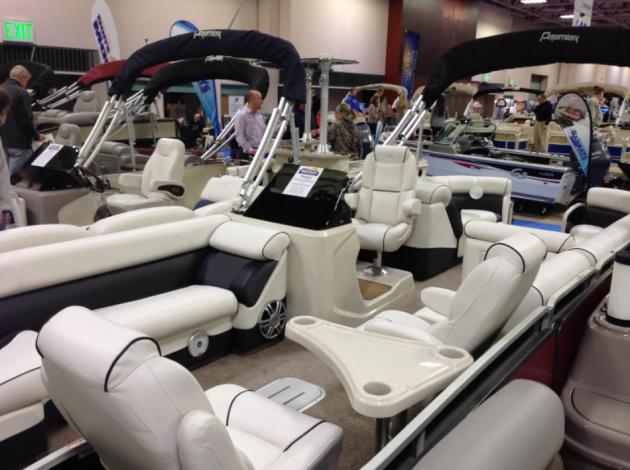
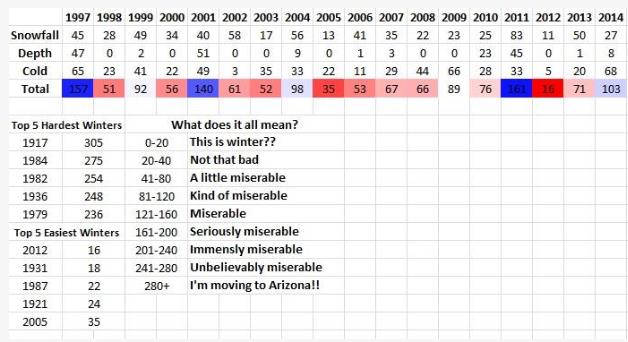
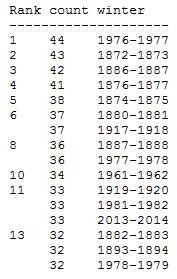
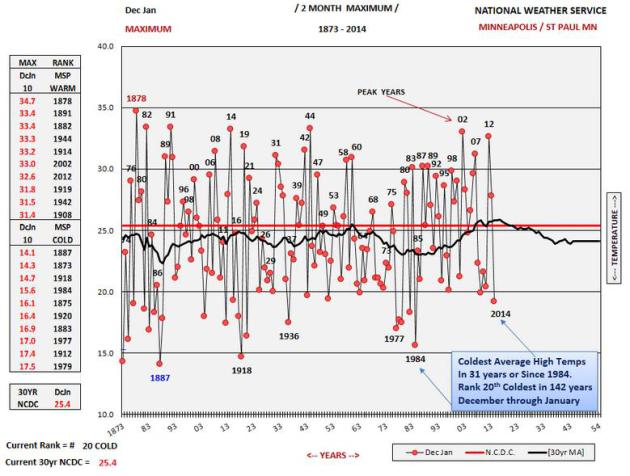
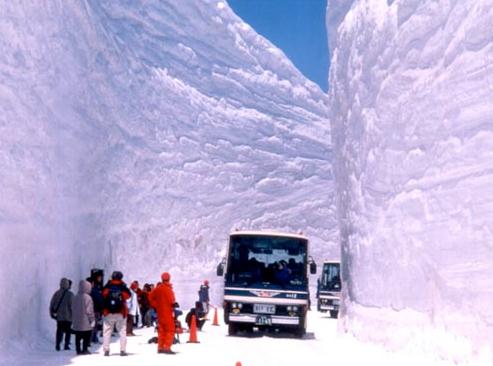
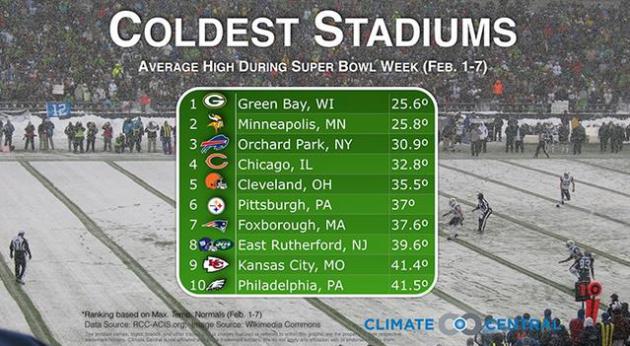


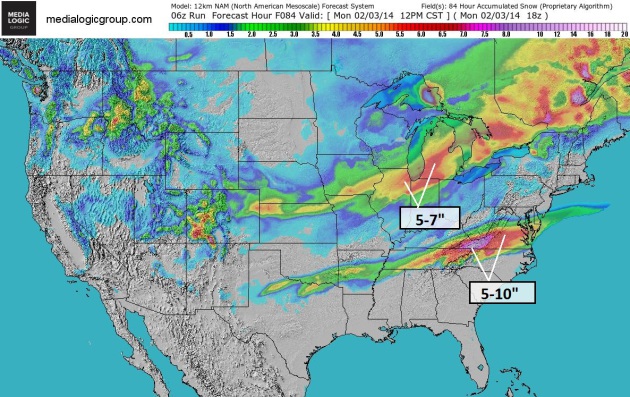



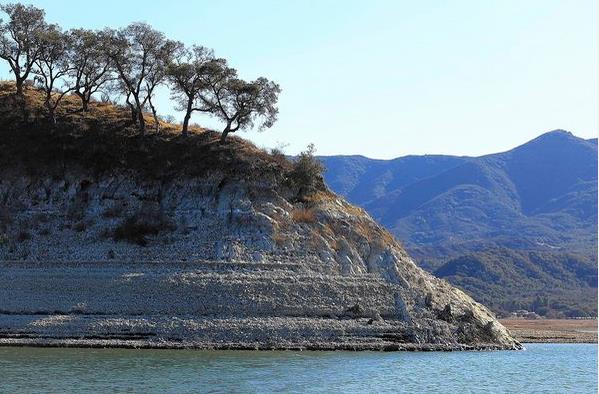
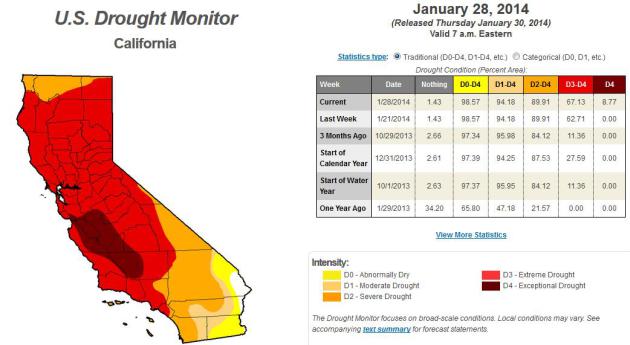
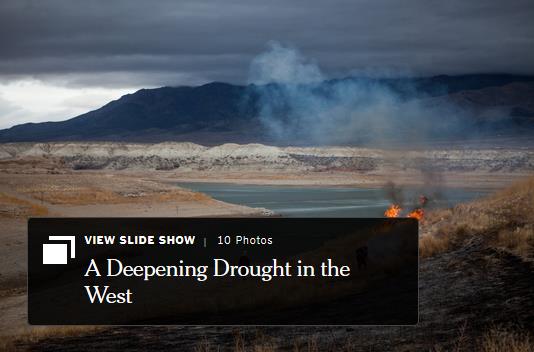
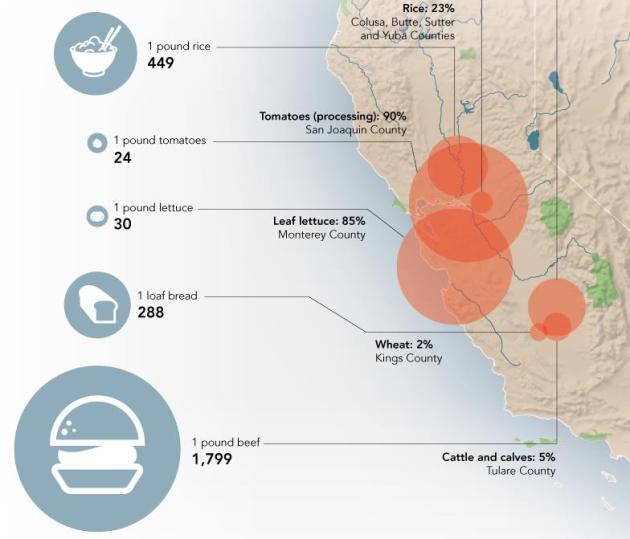

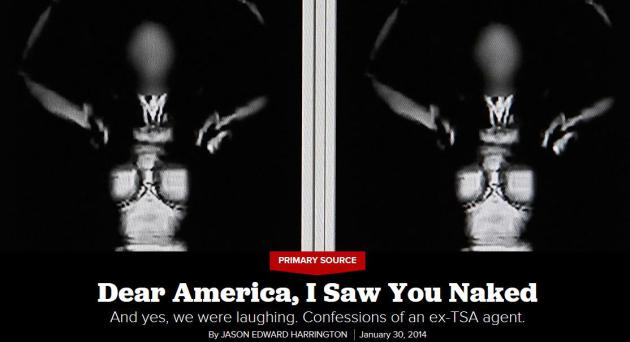






 ,
an online citizen science initiative to track the condition of outdoor
rinks across North America. Anyone with a backyard rink or frozen pond
can sign up and mark the location of their rink on a map. Then all they
are asked to do is record, day by day throughout the winter, whether
their rink is skateable or not..."
,
an online citizen science initiative to track the condition of outdoor
rinks across North America. Anyone with a backyard rink or frozen pond
can sign up and mark the location of their rink on a map. Then all they
are asked to do is record, day by day throughout the winter, whether
their rink is skateable or not..."
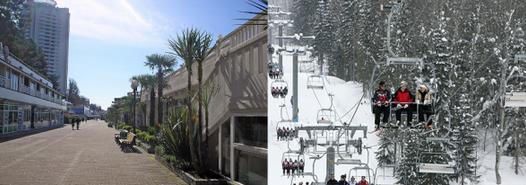
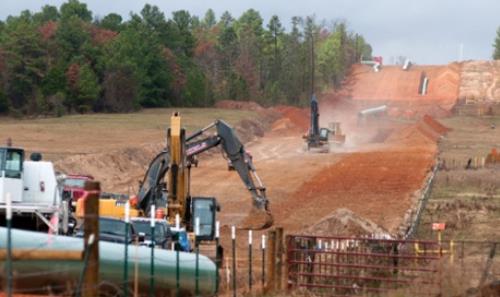
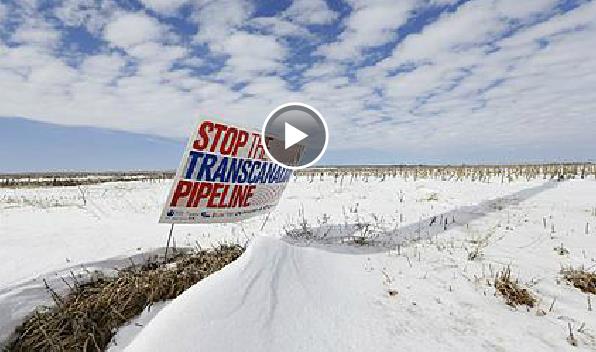

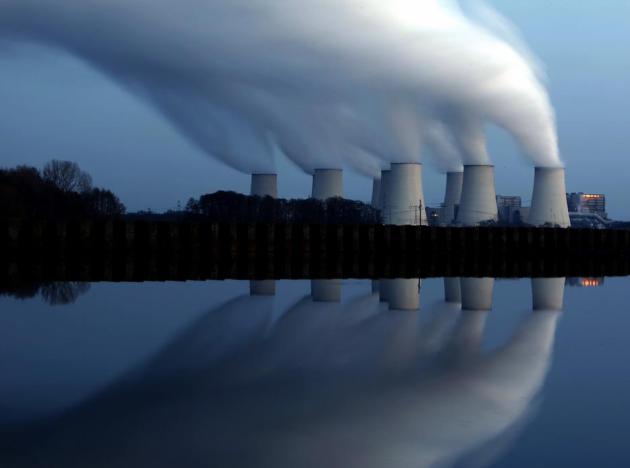
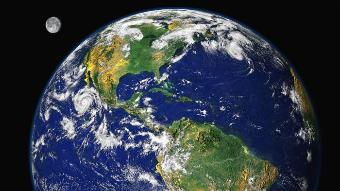

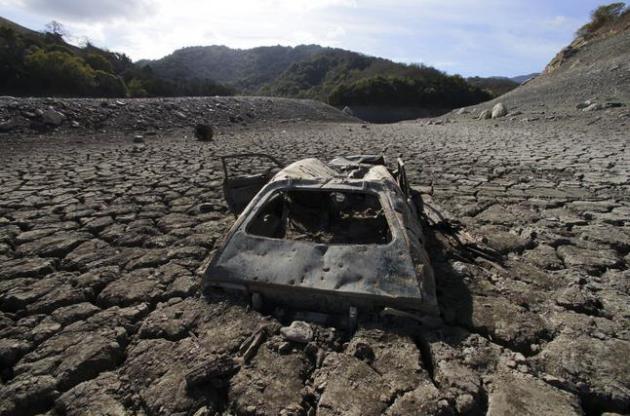


No comments:
Post a Comment